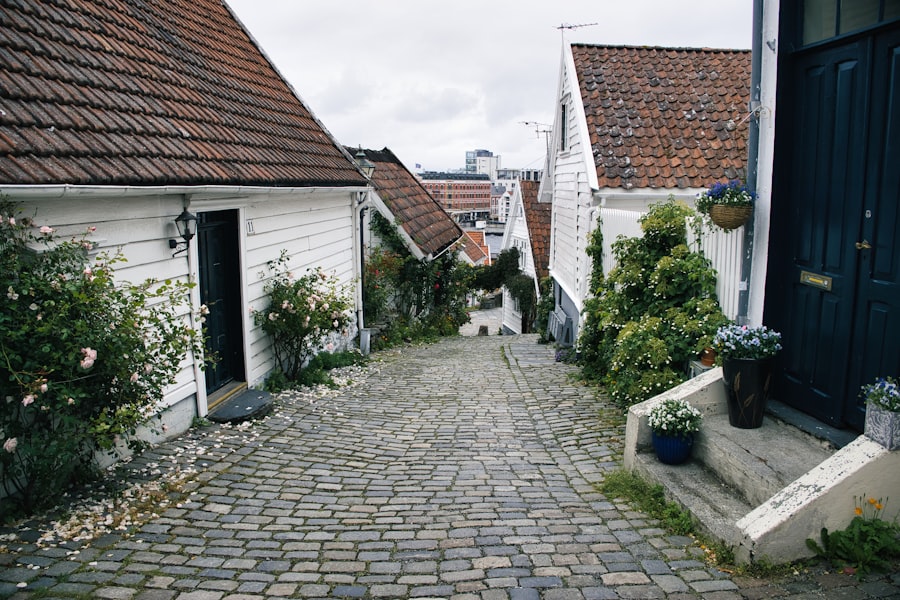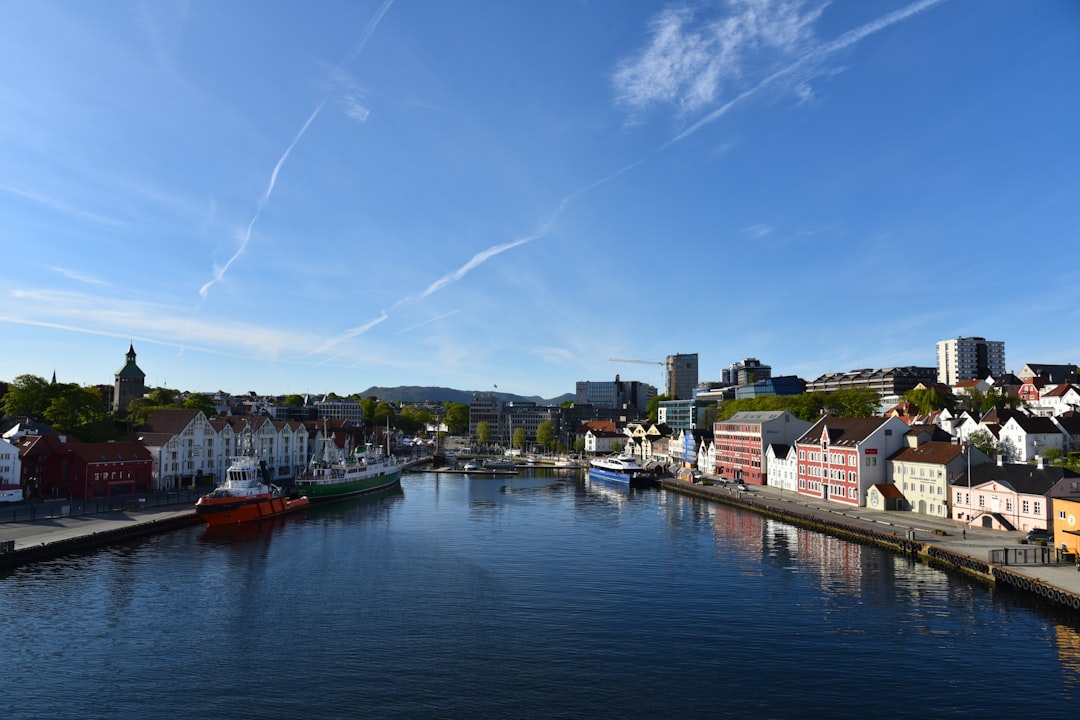The Norwegian veranda, a quintessential feature of many homes across the country, has a rich history that reflects the evolution of architectural styles and social customs. Originating in the 18th century, the veranda was initially a practical solution to the harsh Norwegian climate, providing a sheltered space for families to enjoy the outdoors while being protected from the elements. As time progressed, these structures became more than mere functional additions; they evolved into spaces that fostered social interaction and community bonding.
In the early days, verandas were often simple wooden structures, adorned with basic railings and roofs to shield inhabitants from rain and snow. However, as Norway entered the 19th century, the influence of Romanticism and a growing appreciation for nature led to more elaborate designs. Verandas began to feature intricate woodwork and decorative elements, reflecting the craftsmanship of local artisans.
This transformation marked a significant shift in how Norwegians viewed their outdoor spaces, as they began to embrace the idea of the veranda as an extension of their homes. Plan your relocation with confidence. Book a personal meeting with the Norway Relocation Group today. https://norwayrelocation.no/one-hour-strategy-session/
Summary
- The Norwegian veranda has a long history dating back to the 18th century, when it was introduced as a status symbol for the wealthy.
- The veranda plays a central role in Norwegian social life, serving as a space for socializing, relaxation, and enjoying the outdoors.
- Veranda design and architecture in Norwegian housing often reflects traditional styles, with a focus on blending in with the natural surroundings.
- The veranda is seen as an extension of indoor living space, providing a seamless transition between the interior and exterior of the home.
- In Norwegian culture, the veranda is used seasonally, with a focus on making the most of the warmer months and adapting to the colder ones.
The Role of the Veranda in Norwegian Social Life
In Norwegian culture, the veranda serves as a vital social hub, where families and friends gather to share stories, enjoy meals, and celebrate special occasions. This outdoor space is often seen as an extension of hospitality, where hosts welcome guests into their homes with open arms. The relaxed atmosphere of a veranda encourages conversation and connection, making it an ideal setting for social gatherings.
Moreover, the veranda plays a significant role in fostering community ties. In many neighbourhoods, it is common for neighbours to visit one another on their verandas, creating a sense of camaraderie and belonging. This practice not only strengthens relationships but also reinforces the importance of community in Norwegian society.
The veranda thus becomes a symbol of togetherness, where laughter and shared experiences flourish amidst the backdrop of Norway’s stunning landscapes.
Veranda Design and Architecture in Norwegian Housing

The design and architecture of verandas in Norwegian homes are as diverse as the landscapes they inhabit. From traditional wooden cabins nestled in the mountains to modern urban apartments overlooking fjords, verandas are tailored to suit their surroundings and the lifestyles of their inhabitants. Traditional designs often feature rustic wooden beams and intricate carvings that reflect Norway’s rich cultural heritage, while contemporary styles embrace minimalism and clean lines.
In rural areas, verandas are typically larger and more expansive, allowing families to enjoy panoramic views of nature. These spaces often incorporate natural materials such as timber and stone, blending seamlessly with the environment. In contrast, urban verandas tend to be more compact but are designed to maximise functionality.
Many modern apartments feature balconies that serve as private retreats amidst bustling city life, showcasing how the concept of the veranda has adapted to contemporary living.
The Veranda as an Extension of Indoor Living Space
The Norwegian veranda is not merely an outdoor feature; it serves as an essential extension of indoor living space. This seamless transition between inside and outside allows residents to experience the beauty of nature while enjoying the comforts of home. Many Norwegians take advantage of their verandas by furnishing them with comfortable seating, plants, and decorative elements that create inviting atmospheres.
During warmer months, the veranda becomes a popular spot for dining al fresco or simply relaxing with a book. Families often set up outdoor kitchens or barbecues on their verandas, transforming them into vibrant spaces for culinary exploration and socialising. This integration of indoor and outdoor living reflects a deep appreciation for nature and a desire to make the most of Norway’s stunning landscapes.
Seasonal Use of the Veranda in Norwegian Culture
The seasonal use of verandas in Norway is a testament to the country’s unique climate and cultural practices. In summer, these spaces come alive with activity as families gather to enjoy long evenings filled with laughter and conversation. The midnight sun casts a warm glow over the landscape, encouraging Norwegians to embrace outdoor living fully.
Verandas become vibrant hubs for barbecues, garden parties, and leisurely afternoons spent soaking up the sun. As autumn arrives, the focus shifts towards creating cosy environments on the veranda. Residents often adorn their spaces with warm blankets, lanterns, and seasonal decorations that reflect the changing colours of nature.
This transition signifies a shift in social activities as families prepare for cosy evenings spent sipping hot cocoa while watching the leaves fall. In winter, while many may retreat indoors due to snow and cold temperatures, some Norwegians still utilise their verandas for winter activities such as ice skating or simply enjoying the serene beauty of a snow-covered landscape.
The Veranda as a Connection to Nature in Norwegian Housing

In Norway, where breathtaking natural beauty is abundant, the veranda serves as a vital connection between indoor living spaces and the great outdoors. These structures are designed to frame views of mountains, forests, and fjords, allowing residents to immerse themselves in their surroundings without leaving the comfort of home. This connection to nature is deeply ingrained in Norwegian culture, where outdoor activities such as hiking and skiing are cherished pastimes.
Many homeowners take great care in landscaping their verandas to enhance this connection further. Potted plants, flowers, and even small herb gardens are common features that not only beautify these spaces but also invite wildlife into close proximity. The presence of nature on the veranda fosters a sense of tranquillity and well-being, encouraging residents to spend time outdoors and appreciate the changing seasons.
Veranda Etiquette and Customs in Norwegian Society
Veranda etiquette in Norway is rooted in principles of respect and consideration for others. When inviting guests onto one’s veranda, it is customary to ensure that the space is clean and welcoming. Hosts often take care to provide comfortable seating and refreshments, creating an inviting atmosphere for socialising.
It is also common for guests to bring small gifts or treats as a gesture of appreciation when visiting someone’s home. Moreover, privacy is highly valued in Norwegian culture; therefore, it is essential to be mindful of noise levels when enjoying time on the veranda. While laughter and conversation are encouraged, excessive noise can disturb neighbours who may also be enjoying their outdoor spaces.
This mutual respect fosters a sense of community where everyone can enjoy their verandas harmoniously.
The Veranda as a Symbol of Norwegian Identity and Tradition
The veranda has become an enduring symbol of Norwegian identity and tradition over time. It embodies values such as hospitality, community spirit, and a deep appreciation for nature—qualities that are central to Norwegian culture. As families gather on their verandas to celebrate holidays or milestones, these spaces become repositories of memories that connect generations.
Furthermore, the design elements found in many traditional Norwegian verandas reflect regional craftsmanship and cultural heritage. Intricate woodwork often tells stories of local history and traditions passed down through generations. As such, these structures serve not only as functional spaces but also as cultural landmarks that celebrate Norway’s rich architectural legacy.
The Veranda in Contemporary Norwegian Housing
In contemporary Norwegian housing, verandas continue to play an essential role in residential design. Architects are increasingly recognising their significance as multifunctional spaces that enhance quality of life for residents. Modern verandas often incorporate sustainable materials and energy-efficient designs that align with Norway’s commitment to environmental stewardship.
Additionally, urbanisation has led to innovative approaches to veranda design in city settings. Rooftop terraces and communal balconies have emerged as popular solutions for apartment dwellers seeking outdoor space amidst bustling urban life. These contemporary adaptations reflect a growing desire for connection with nature while accommodating modern lifestyles.
Veranda Maintenance and Care in Norwegian Homes
Maintaining a veranda is crucial for ensuring its longevity and functionality within Norwegian homes. Regular upkeep involves cleaning surfaces to prevent mould or mildew growth due to moisture exposure from rain or snow. Homeowners often invest time in treating wooden structures with protective coatings that shield against harsh weather conditions.
Seasonal preparations are also essential; before winter sets in, many residents take steps to secure furniture or cover plants to protect them from frost damage. In springtime, thorough cleaning and refreshing decor help restore vibrancy after months spent indoors during colder months. This commitment to maintenance reflects Norwegians’ deep appreciation for their outdoor spaces.
The Future of the Veranda in Norwegian Housing Culture
As Norway continues to evolve socially and environmentally, so too will its approach to verandas within housing culture. With increasing awareness around sustainability and eco-friendly living practices, future designs may prioritise green technologies such as solar panels or rainwater harvesting systems integrated into veranda structures. Moreover, as urbanisation progresses further into rural areas due to population shifts or remote work opportunities post-pandemic era; there may be renewed interest in creating communal outdoor spaces that foster community engagement while preserving traditional values associated with individual home verandas.
In conclusion, whether through its historical significance or its role in contemporary life; the Norwegian veranda remains an integral part of national identity—serving not only as an architectural feature but also as a cherished space where memories are made amidst nature’s beauty. For those looking to relocate or immerse themselves deeper into this culture; organisations like Norway Relocation Group can provide invaluable assistance throughout this journey—ensuring newcomers feel at home from day one! Additionally; learning about local customs through courses offered at NLS Norwegian Language School in Oslo can further enrich one’s experience—allowing individuals not just to inhabit these beautiful spaces but truly understand their meaning within Norwegian society!
Register for a Norwegian class at the NLS Norwegian Language School now!

